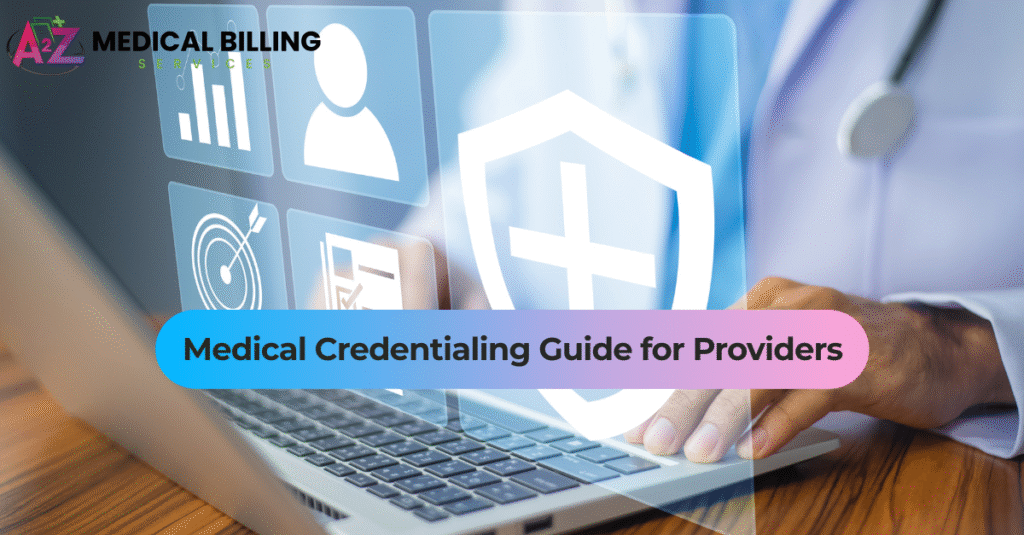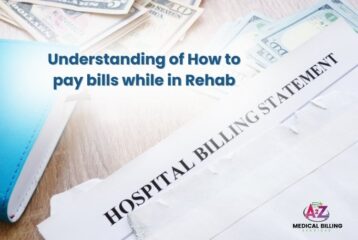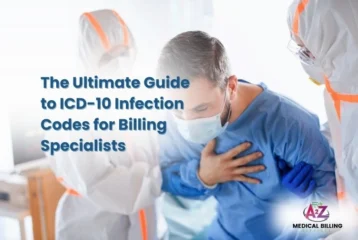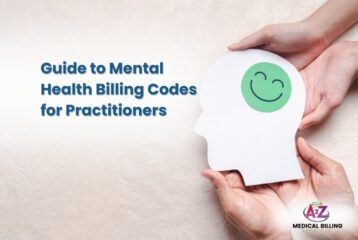If you’re a healthcare provider—whether you’re starting your practice or joining a hospital—you can’t afford to skip credentialing and insurance verification. Without them, you’re essentially working for free. You might offer top-tier care but won’t get paid if payers haven’t approved your credentials, or the patient’s benefits weren’t verified.
Let’s break this down in plain language and walk through everything—from understanding the basics to getting credentialed and verifying benefits like a pro.
What is Credentialing in Medical Billing?
Credentialing in medical billing is the formal process of validating a healthcare provider’s qualifications to ensure they meet the standards required by insurance payers, healthcare networks, and regulatory bodies. It’s more than just paperwork—it’s the first step toward getting recognized as a legitimate, billable provider in the healthcare ecosystem.
This process includes primary source verification of your:
- Medical degrees and education
- State licenses and board certifications
- DEA registration (for prescribing providers)
- Malpractice insurance and claims history
- Work and hospital affiliation history
Think of it like applying for a job with an insurance company as your boss. They want to know:
- Are you legit?
- Can you be trusted with their members?
- Are you up-to-date with your licenses and training?
Because insurance companies aren’t just cutting checks—they’re entrusting you with the care of their members. To avoid fraud, ensure patient safety, and control healthcare quality, they need proof that you’re:
- Qualified to provide the services you bill for
- Legally authorized to practice in your state
- Reliable in terms of your past conduct and training
Types of Credentialing in Healthcare:
Here are some types of medical credentialing
1. Insurance Credentialing (Payer Credentialing)
Insurance credentialing is when healthcare providers get approved for billing third-party payers—like Medicare, Medicaid, Blue Cross Blue Shield, Aetna, and UnitedHealthcare—as in-network providers.
Providers cannot receive reimbursement from insurance plans for patient services without insurance credentialing. It’s how you officially “join the network.”
What it includes:
- NPI validation
- State license verification
- CAQH enrollment
- Submission of credentialing application to each insurance payer
- Review of malpractice history, certifications, and more
2. Hospital Credentialing (Medical Staff Privileging)
Hospital credentialing, or medical staff privileging, is the process hospitals use to verify a provider’s qualifications before allowing them to admit or treat patients within the hospital facility.
Hospitals must ensure that every provider on-site meets high clinical standards and is authorized to perform specific procedures.
What it includes:
- Peer recommendations
- Clinical skill evaluations
- Background checks
- Hospital bylaws compliance
- Medical staff committee approval
3. Facility Credentialing (Group Practice Credentialing)
Facility credentialing applies to organizations—such as group practices, clinics, or rehab centers—that must be credentialed as a business entity before billing insurers.
Payers often require the individual provider and the facility to be credentialed to ensure compliance, billing accuracy, and quality control.
What it includes:
- Business licensing
- Tax ID and NPI for the facility
- Group malpractice insurance
- Ownership and managing providers’ credentials
- Physical site inspection (for some Medicaid plans)
4. Recredentialing (Ongoing Maintenance of Status)
Recredentialing is the periodic process of updating and renewing your credentials to maintain your active provider status with payers and hospitals.
Credentialing isn’t a one-and-done deal. Most insurers require re-credentialing every 2–3 years to ensure you’re still compliant and in good standing.
What it includes:
- Updated licenses and DEA registration
- Recent CME or continuing education
- New malpractice claims or disciplinary actions
- Refreshed CAQH profile
5. Individual Provider Credentialing
Individual credentialing is for solo practitioners or professionals—like physicians, specialists, dentists, nurse practitioners, and therapists—who need to validate their credentials independently, not as part of a group or hospital.
Each payer must credential each provider separately to bill under their own NPI. This is crucial for solo practices, locum tenens, or new providers joining a group.
What it includes:
- State license and board certification
- Personal malpractice insurance
- NPI (Type 1) registration
- Background checks
- Education and work history
6. Delegated Credentialing
Delegated credentialing is when a health plan allows a large healthcare organization (like an ACO or hospital system) to handle credentialing on its behalf.
It reduces duplication and allows for faster onboarding of new providers—which is especially useful for large medical groups.
Credentialing vs. Enrollment: What’s the Real Difference?
If you’re a healthcare provider or clinic administrator navigating insurance billing for the first time, credentialing and enrollment can sound interchangeable—but they’re not. Understanding the difference between the two is crucial to ensuring your claims get paid.
Credentialing = Verifying Your Professional Qualifications
Credentialing is when an insurance company (hospital, facility, etc.) thoroughly verifies your background to ensure you’re qualified to deliver medical services. This includes checking you:
- Medical education and degrees
- Board certifications
- State licenses and DEA registration
- Malpractice insurance and claims history
- Work experience and references
It’s essentially your professional background check.
Enrollment = Joining the Insurance Network
Once you’re credentialed (i.e., approved), enrollment is when you officially sign a contract with the insurance payer to become an in-network provider. This agreement outlines:
- Your fee schedule or reimbursement rates
- The scope of covered services
- Terms of participation (e.g., billing timelines, documentation requirements)
- Provider directory listing (so patients can find you)
It’s like signing a job offer after passing the interview.
Credentialing vs. Enrollment: Comparison Table
| Feature | Credentialing | Enrollment |
| Purpose | Verifies provider’s qualifications, training, and background | Officially contracts the provider with an insurance network |
| When It Happens | Before enrollment begins | After successful credentialing |
| Includes | License check, board certification, malpractice history, CAQH profile, DEA, NPI | Contract execution, fee schedule agreement, provider portal access |
| Performed By | Insurance companies, hospitals, credentialing departments | Insurance payers or third-party administrators |
| Outcome | Provider is deemed eligible to apply for network participation | Provider is added to the payer’s network and can start billing for services |
| Key Tools Used | CAQH ProView, State licensing boards, background check databases | Insurance provider portals, contract management platforms |
| Affects Reimbursement? | Indirectly—must be completed first. | Directly—determines if you can bill and get paid. |
| Revalidation Required? | Yes, every 2–3 years (re-credentialing) | Yes, enrollment updates or re-enrollment may be required periodically |
| Analogy | Like passing a background check | Like signing a job offer or employment contract |
| Applies To | Physicians, nurse practitioners, dentists, therapists, behavioral health providers | Any provider wanting to bill insurance as in-network |
The Credentialing Process
Credentialing is a structured, multi-phase process designed to verify that you, as a healthcare provider, are qualified, licensed, and trustworthy to treat patients and receive insurance reimbursements. It involves primary source verification, which means payers and credentialing bodies go straight to the source to validate your credentials—no shortcuts.
This process isn’t just red tape. It’s how payers ensure:
- You’re medically competent
- You’re legally authorized to practice in your state
- You haven’t had major disciplinary actions or red flags in your history
Let’s walk through each step in detail.
Step 1: Gather Your Core Documents
Before verifying anything, you must prepare and submit a complete credentialing packet. This typically includes:
- Government-issued ID
- Updated CV (usually the last 5–10 years of clinical work)
- Medical degree and transcripts
- State medical license
- DEA certificate (if applicable)
- Board certifications
- Malpractice insurance (certificate of liability)
- List of hospital privileges
- NPI (National Provider Identifier)
- CAQH ID and access
- Work history and gap explanations (for any 30+ day gaps)
Step 2: Primary Source Verification
Credentialing isn’t based on trust alone. Insurance companies and hospitals will verify your credentials at the source, including:
Here’s what typically gets verified and by whom:
- Medical Degree: Verify with your medical school or university registrar to confirm your education is legitimate and complete.
- State Medical License: Checked through the state’s professional licensing board to ensure you’re legally authorized to practice in that state.
- Board Certification (if applicable): Validated with the American Board of Medical Specialties (ABMS) or relevant specialty board to confirm your training and expertise in your field.
- DEA Registration: Confirm with the U.S. Drug Enforcement Administration to verify that you’re legally permitted to prescribe controlled substances.
- Malpractice Insurance Coverage: Verify through your liability insurance provider to ensure your policy is active and meets payer requirements. They also check your claims history.
- Work History and Hospital Affiliations: Contacted past employers, medical groups, and hospital credentialing offices to confirm your employment dates, job roles, and standing.
- NPI Number (National Provider Identifier): Validated via the National Plan and Provider Enumeration System (NPPES) to confirm your unique 10-digit provider ID is active and accurate.
Step 3: Peer References and Professional Evaluations
Most insurance companies require 3–5 peer references from colleagues who have worked closely with you in a clinical setting. These references typically answer questions about your:
- Clinical competence
- Ethical behavior
- Professionalism
- Interpersonal skills
- Adherence to protocols
If you’re a pediatrician, references might come from other pediatricians, nurse practitioners, or department heads who have supervised or collaborated with you.
Step 4: CAQH Profile Setup and Attestation
Most commercial payers require you to maintain an active and complete CAQH ProView profile. This is a centralized repository that payers access to pull your documents.
You’ll need to:
- Create a profile on https://proview.caqh.org
- Upload all your credentials and documents
- Authorize payers to access your file
- Re-attest every 120 days to keep the information current
Step 5: Submit to Insurance Payers
Once your documentation is in order, you (or your billing/credentialing specialist) will submit your packet to each insurance company individually. Each payer has its own online portal or paper process, such as:
- Aetna Provider Portal
- UnitedHealthcare’s Optum credentialing system
- Availity (used by several payers)
- Medicaid/MCO-specific portals
Credentialing with a commercial insurance payer can take 60–120 days, depending on the payer and how clean your application is.
Step 6: Follow-Ups and Corrections
Don’t just submit and forget. Many applications get stuck due to missing or expired documents, unanswered verification calls, or slow hospital responses. Follow up every 2–3 weeks and keep logs of:
- Submission dates
- Contact names
- Pending items
- Expiring documents
Step 7: Recredentialing (Every 2–3 Years)
Credentialing isn’t forever. Most insurance companies require recredentialing every 24–36 months. This involves:
- Updating your CAQH and NPI
- Re-verifying licenses and DEA
- Submitting any new malpractice claims or changes
Failure to re-credential on time can lead to network suspension or termination.
How Does Credentialing Work in Medical Billing?
Credentialing isn’t instant—it’s a multi-step process that can take 60 to 120 days or even longer. Here’s what typically happens:
- Collect All Your Info: NPI, license, DEA number, malpractice insurance, CV, references.
- Enroll with CAQH: This is like your digital profile that insurers can access.
- Apply to Insurance Companies: Submit applications to each insurance plan you want to join.
- Payer Review & Verification: The payer checks your education, license, past employment, and more (called primary source verification).
- Approval & Contracting: Once approved, you’ll receive a contract to become an in-network provider.
Credentialing Checklist
Here is a complete medical billing credentialing checklist for providers:
1. Medical Education & Training
- Medical School Diploma
Verified copy of degree from an accredited institution. - Transcripts
Official transcripts from medical/osteopathic/nursing school(s). - Internship/Residency/Fellowship Certificates
Documentation for all completed post-graduate training.
2. State Medical Licensure
- Active State License
Must be valid in the state(s) of practice. Include license number, expiration date, and issuing authority. - License History
Past and current licenses, including any disciplinary actions (if applicable).
3. Board Certification (If Applicable)
- Specialty Certification
Include documentation from recognized medical boards (e.g., ABMS, AOA). - Re-Certification Status
Ensure up-to-date certification and maintenance of certification (MOC) if required.
4. DEA Registration (If Prescribing)
- DEA Certificate
Include DEA number, expiration date, and prescribing state. - State Narcotics License
Required in certain states in addition to DEA registration.
5. Malpractice Insurance Coverage
- Certificate of Insurance (COI)
Active malpractice policy showing limits and coverage type. - Claims History (Loss Run Report)
Last 5-10 years of claims activity from the insurer.
6. Hospital Privileges and Affiliations
- Current Hospital Privileges
Name of the facility, type of privileges, start and end dates. - Previous Privileges
Include history and reasons for any revoked/suspended privileges. - Admitting Arrangements
For outpatient-only providers without admitting rights.
7. Work History & Professional References
- Detailed CV
Including all professional experience in reverse chronological order. - Gaps in Employment
Explanation for any gaps longer than 30-60 days. - Three to Five Professional References
Must include name, relationship, contact info, and credentials.
8. Active CAQH Profile
- Up-to-Date CAQH Profile
Must be current and attested within the last 120 days. - Login Credentials for Access
Required to allow payers to retrieve credentialing info. - Document Uploads
Ensure all supporting documentation (e.g., licenses, COI) is uploaded to CAQH.
9. Government and Payer Enrollment Forms
- NPI Registration
National Provider Identifier (NPI) confirmation. - Medicare/Medicaid Enrollment (PECOS)
Must be enrolled via CMS PECOS system. - Commercial Insurance Applications
Applications or online credentialing portals completed for:- Aetna
- Cigna
- UnitedHealthcare
- BCBS
- Humana
- Others as needed
10. Background Checks & Compliance
- OIG/SAM Exclusion Checks
Confirm the provider is not excluded from federal programs. - State Background Checks
Required for some payer or hospital credentialing. - HIPAA & OSHA Training Verification
Certificates of completion may be requested.
11. Additional Items (As Needed by Payers or States)
- CPR/BLS/ACLS Certification
- Immunization Records
Especially for facilities with patient contact requirements. - Tax ID/EIN and W-9
- Practice Location Info
Including group NPI, facility name, and office hours.
Insurance Verification and VOB: The Frontline of Revenue
Now, let’s talk about something that affects every single claim: insurance verification and VOB (Verification of Benefits).
What is Insurance Verification?
Insurance verification means checking whether a patient’s insurance policy is:
- Active
- Covers the required service
- Has deductibles or co-pays
- Requires prior authorization
How the Verification Process Works
Here’s a breakdown of the steps:
- Gather Patient Info: Insurance card, DOB, and policy number.
- Contact the Insurance Company: Use payer portals or clearinghouses (e.g., Availity).
- Review Plan Details: Check coverage limits, exclusions, and network status.
- Note Prior Auth Requirements: Many services require pre-approval.
- Share Info with the Billing Team and the Patient
13. What is VOB (Verification of Benefits)?
VOB goes a step deeper. It confirms the exact benefits a patient is eligible for. This is common in:
- Behavioral Health
- Rehab centers
- Long-term treatment programs
Key Data in a VOB is :
- Deductibles and out-of-pocket max
- Coverage for specific procedures
- Prior authorization rules
- Co-pay and co-insurance amounts
- Limitations on visits
Tools to Automate Credentialing & Insurance Verification
If you’re still manually managing credentialing and insurance verification, you’re probably spending too much time chasing documents, calling payers, and fixing denied claims. Good news? Some powerful tools can automate much of this work, saving time, reducing errors, and improving your revenue cycle.
Let’s break it down into two key areas: Credentialing automation tools and insurance verification platforms.
Credentialing Automation Tools
First up—credentialing. This is where platforms can make life easier, especially if you manage multiple providers or specialties.
CAQH ProView is an industry-standard tool. It’s free for providers and required by most commercial payers. You build a profile with your education, licenses, malpractice coverage, and more, then authorize payers to access it. Just make sure you re-attest every 120 days to keep it active.
Modio Health is ideal for practices and health systems that want a dashboard to track licenses, certifications, DEA registrations, expiration dates, and payer status. It alerts you before something goes out of date and helps streamline re-credentialing.
Medallion offers full-service credentialing automation for medical groups, digital health companies, and MSOs. It handles provider onboarding, payer enrollment, and delegated credentialing if your group qualifies.
Symplr is more enterprise-focused and widely used by hospitals. It not only handles credentialing but also helps manage compliance, privileging, and even auditing.
For those looking into next-gen tech, Verifiable is an emerging player that uses real-time data and blockchain-backed credential verification, which is especially helpful for fast-scaling telehealth platforms.
Insurance Verification Tools (VOB / Eligibility Checks)
Now, let’s talk about insurance verification, also called eligibility verification or VOB (Verification of Benefits). This is the step where you confirm whether a patient’s insurance is active, their benefits and whether any prior authorizations are required—all before the visit.
Availity is one of the most popular platforms for this. It’s free, connects to major payers like Aetna, BCBS, and Humana, and lets your front desk check eligibility in real time. You can also submit prior authorizations and get updates right in the portal.
Change Healthcare is a more robust tool that goes beyond just eligibility—it integrates into your billing system to help with claims, pre-service estimates, and payment workflows. Great for medium to large practices.
Experian Health brings its background in credit and financial data to offer tools for insurance discovery, eligibility checks, and patient responsibility estimates. This helps you collect more upfront and avoid underpayments.
ZirMed (now part of Waystar) is another all-in-one solution. It does insurance verification, claims scrubbing, denial tracking, and analytics to show where you’re losing money.
And if you’re a smaller clinic or just starting, Eligibility.com is a lightweight, cost-effective tool to check benefits quickly without all the bells and whistles.
Pro Tips for Providers: Make Credentialing and Verification Hassle-Free
Credentialing doesn’t have to be a headache—if you stay organized and proactive, you can avoid the most common pitfalls that delay approvals and payments. Here are a few expert tips to stay ahead:
- Keep a digital credentialing file with your updated licenses, certifications, malpractice insurance, and CV—it saves time every time you reapply or update CAQH.
- Log into your CAQH profile every 90–120 days to re-attest and keep it active. Many providers lose payer access just because they forgot this step.
- Don’t wait until the last minute to start the credentialing process. Depending on the payer and specialty, it can take 60–120 days or more.
- Track all your payer applications with a spreadsheet or credentialing software so you know who’s pending, approved, or needs follow-up.
- Use automation tools for credentialing and insurance verification—this reduces errors and frees up your staff to focus on patient care.
- Stay ahead of expirations—set calendar reminders for licenses, DEA, malpractice insurance, and re-credentialing due dates.
Conclusion:
Credentialing gets you in the system. Verification keeps you there. Together, they:
- Boost your revenue cycle performance
- Reduce denials
- Improve patient experience
- Keep you legally compliant
If you’re a provider or medical office manager, invest in credentialing and insurance verification systems now—you’ll thank yourself when your claims go through without a hitch.
|
Let A2Z Medical Billing Handle the Headache for You Let A2Z Billing simplify your credentialing and eligibility verification process. Contact us today for a free consultation. |



